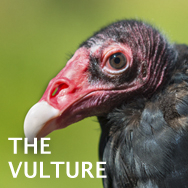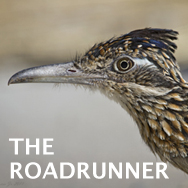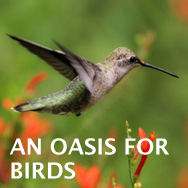

Join BirdNote tomorrow, November 30th!
Illustrator David Sibley and actor H. Jon Benjamin will face off in the bird illustration battle of the century during BirdNote's Year-end Celebration and Auction!
Follow Alex Chadwick through prickly-pear covered pathways and the boulder-dotted terrain of Big Bend National Park.
Alex Chadwick has been traveling in West Texas for BirdNote. The region is far from cities, but dotted with small towns. He spent time with some people who moved there because the land fit them so well.
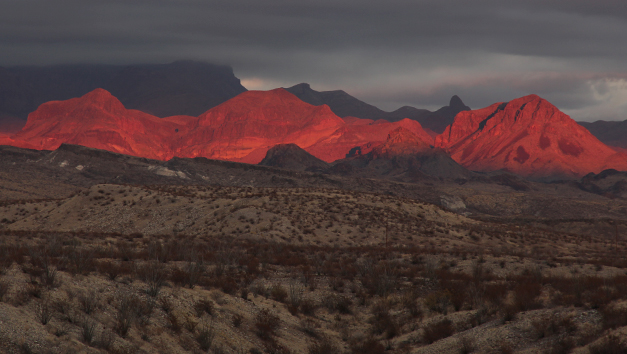
[Raven's call at Cattail Falls]
AC: When Greg Hennington invited Valynda Ward on their first date, it was for a hike to Cattail Falls in Big Bend National Park.
The path cuts through prickly pear, some of it chewed on by bears. Then there are big rocks to shimmy by, to a small pond at the foot of a tall, smooth face of rock. There is a waterfall sometimes, but when we saw it in summer, there was only a drizzle.
[Trickle of water on rock]
When Greg and Valynda got married, they settled about a half-hour west of here, just across the park boundary, to run a guiding company, the Far Flung Outdoor Center. They both are former bankers, Valynda from a town a couple of hours north, Greg from Houston, all the way across the state. They surprised everyone.
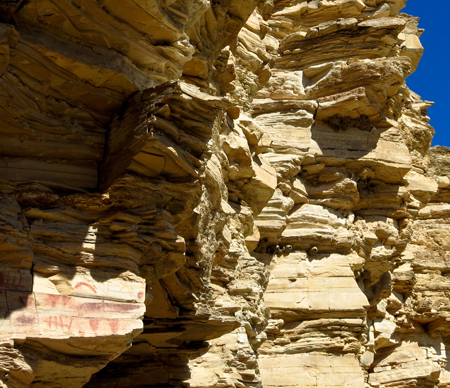
Valynda: I went in to visit one day and somebody asked me what I’d been doing, and I said, "Oh, I've just gone and gotten my CDL …my commercial driver's license, so I can drive a bus." And they looked at me like I was nuts. And I said, "Lemme tell you, I’ll never do it again, but this time I did it for love."
AC: Greg realized they might need emergency medical help on their trips, so he trained to be a paramedic. And now he's in charge of emergency medicine for the county fire department. There are no hydrants. Water is carried on a pumper truck. And road signs are rare.
Greg: We have no street signs; we have no street names. It’s the third cactus, second rock, fourth yucca on the left.
AC: That’s the way it is around here. To find a woman who built an oasis here, Carolyn Ohl, the map she sends us says, "Turn on snake road, then cross an arroyo … and look for the round rock tank." That’s her place.
CO: I’ve got a brother who likes to come down here and rock-hunt. And one time he brought a girlfriend with him. And we went out rock-hunting, and he took off in one direction and I took off in the another direction. We were looking for petrified wood out by Agua Fria. Just assumed she'd take off in some direction looking for rocks, and that we’d all come back to the car when we got tired, and show each other what we found, you know? And she stayed at the car, and she actually hyperventilated and got panicky. She said it was the first time in her life she hadn't had another human being within sight of her.
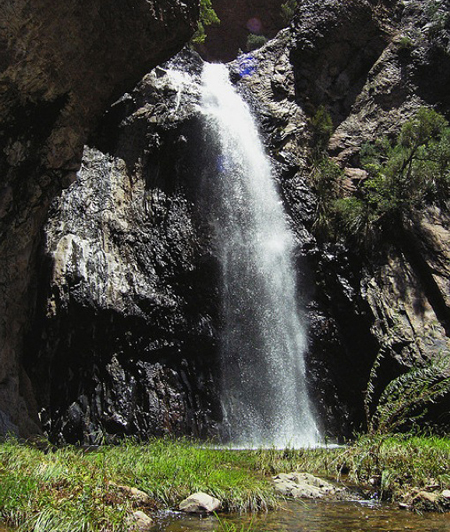
AC: About thirty minutes away, the desert rises to foothills, and then mountains. This is Big Bend Park. On the porch of the Chisos Mountain Lodge, a woman told me this story. During the government shut-down of 2013, this whole national park was closed. No guests, no traffic –- silence. Within days, she said, the animals were ambling across the lodge patio, settling in, reclaiming the space.
MF: It's not for everybody.
AC: That's Mark Flippo. He's a former park ranger who worked here for many years and then retired nearby.
MF: Some people need to have a horizon that is closer to them. And so that big open space can be a little intimidating. And the lack of lights ... you don’t know where the neighbor is. [Chuckles] Personally, I find a sense of comfort in that. I like not being able to see a lot of lights. And I don’t mind not having a lot of people around me.
AC: This, he says, is probably one of the last places in the continental United States where a person can have so much space all around.
For BirdNote, this is Alex Chadwick.
###
This series was produced with generous funding from Deedie and Rusty Rose.
It's a fact!
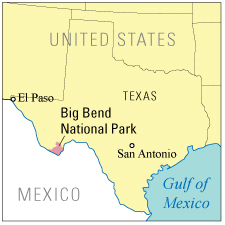
Where exactly is Big Bend?
It's near the 100th meridian, in the middle of the North American continent.
Big Bend is on about the same latitude as Houston and New Orleans.
It's 530 miles from Dallas, nearly an 8-hour drive. And just about the same from Albuquerque, New Mexico.
It's one of the most remote -- and not surprisingly, one of the least visited -- national parks in the US.
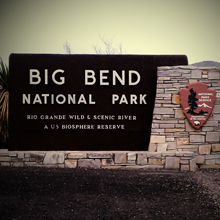
It's BIG. How big?
The park covers more than 800,000 acres, making it larger than the state of Rhode Island. With over 100 miles of paved roads, 150 miles of dirt roads, and about 200 miles of hiking trails, the park offers nearly limitless opportunities for scenic driving, hiking, camping, backpacking, mountain biking, horseback riding, birdwatching, wildlife observation, and stargazing.
The Rio Grande borders the park for 118 miles. Including two protected areas in Mexico, Big Bend is now part of one of the largest transboundary protected areas in North America. More than two million acres of Chihuahuan Desert resources are now under the protection of the United States and Mexico.
-- National Park Service

Remote? Inhospitable?
In 1971, Apollo 17 astronauts Gene Cernan and Harrison Schmidt visited Big Bend to study the region's geology in preparation for their mission to the moon. This was one of four field trips to Big Bend that Apollo astronauts participated in between 1964 and 1971.
Today, Big Bend has become one of the most popular vacation destinations in the state of Texas, visited by an average of 300,000 visitors each year.
-- National Park Service
It's a Fact images: Texas/Big Bend map - courtesy National Park Service; Big Bend sign - Amber McPherson; Big Bend landscape - MLHRadio
Related Resources
Learn more about Big Bend National Park
If you go -- Travel tips from National Geographic
Big Bend - Designated an International Dark Sky Park
More Big Bend adventures:

